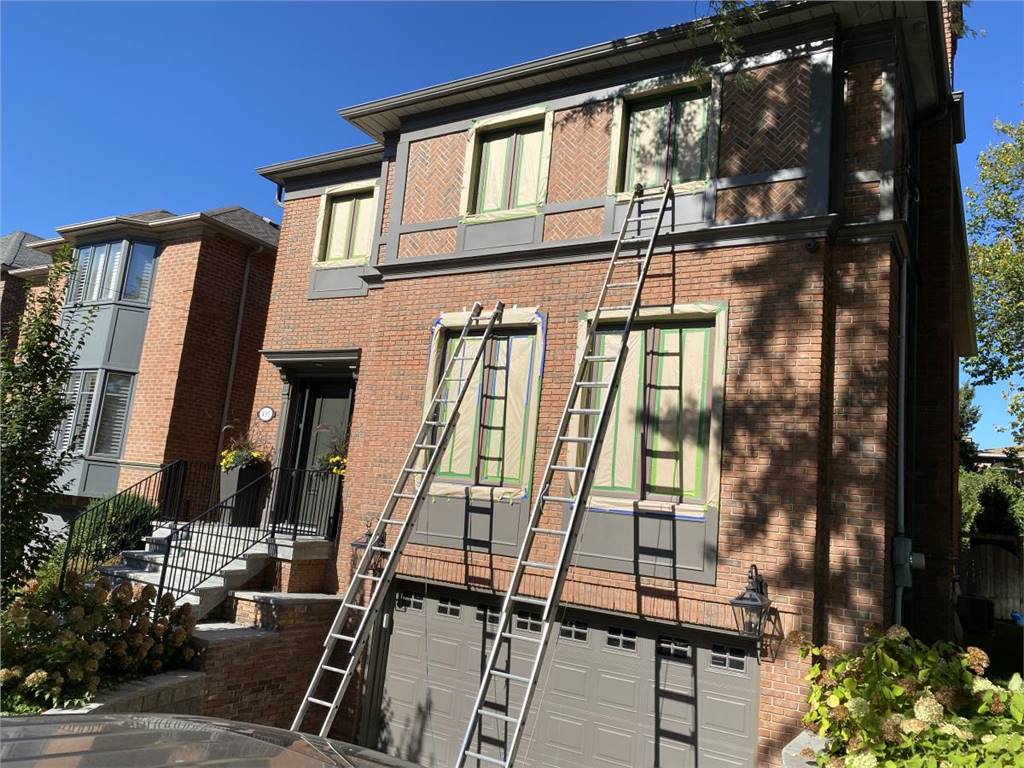
Differences Between Painting Techniques
There are many different ways to paint a house. Some techniques are better for beginners, while others are more advanced. In this blog post, we will discuss the differences between three popular painting techniques: rolled on paint, brushed on paint, and sprayed on paint. We will also talk about the pros and cons of each technique. By the end of this post, you should have a good idea of which technique is best for you. Happy Painting!
Painting with a Roller:
A paint roller is a cylindrical device that holds paint in contact with the painting surface. Paint rollers come in different diameters and usually have a wooden or plastic handle.
There are several advantages of using a paint roller over other methods of painting.
Paint rollers aren't as likely to drip or leave streaks as brushes can.
Paint rollers cover a larger surface area more quickly than brushes, so they can save you time when painting large rooms or walls.
You can avoid brush strokes altogether by using a roller with a smooth sleeve. This can give your painted surfaces a more uniform, professional-looking finish.
Paint rollers are less expensive than most airless paint sprayers, so they can be a more budget-friendly option for home DIY projects.
There are a few disadvantages to using a paint roller when painting your home. First, you will want to make sure that the paint roller is clean before use. Otherwise, the paint may not apply evenly to the surface. Second, paint rollers can be difficult to control, so you may end up with an uneven finish. Finally, if you're not careful, you may get paint on your clothing or furniture. With these things in mind, using a paint roller can still be a great option for painting your home. Just be sure to take the necessary precautions and follow some simple tips for best results.
Painting with a Brush:
A painting brush is a brush that is specifically designed for use with paints. Painting brushes are typically made with natural bristles, which are ideal for absorbency and holding paint pigments.
One of the main advantages of painting a house with a brush is that it provides a more even coat of paint, which can be particularly important if you're trying to achieve a pristine finish. Brushes also tend to leave fewer streaks and lines than rollers, so they can give your paint job a very polished look.
Another advantage of using a brush is that you'll have more control over the paint application process. This means you can easily avoid areas that you don't want painted, like window frames or floorboards. With a roller, it's much easier to accidentally get paint where you don't want it.
Finally, brushes are generally less expensive than rollers, so if you're on a budget, choosing a brush is a better idea.
There are a few main disadvantages to painting a house with a brush. First, it's a very time-consuming process. It can take hours—or even days—to paint an entire house using a brush. Second, it's generally not as precise as using a paint sprayer. You may end up with streaks or missed spots if you're not careful. Third, it can be messy and difficult to clean up afterward. Finally, it's not always the most cost-effective option in some terms. They sometimes require more paint than other methods, such as rollers or sprayers.
Painting with a Spray Gun:
A spray gun is a tool used to spread paint, stain, or other finishes over the surface of an object.
A major advantage of painting a house with a spray gun is the speed and efficiency with which it can be done.
In addition, when done correctly, spraying creates less waste than traditional painting methods. With trim work, for example, it’s very easy to avoid runs and drips when using a quality spray system.
Quality paint jobs also tend to last longer when they’re applied with a sprayer. The smooth, even coverage provided by spraying helps to protect surfaces from the elements and inhibits premature cracking and flaking of the paint.
There are a few disadvantages of painting a house with a spray gun. First, it can be difficult to achieve a smooth finish. Second, the paint may not cover evenly, which can result in streaks or blotches. Third, it can be difficult to get into tight spaces or corners. Fourth, over-spray can cause paint to land on windows or cars parked nearby. Finally, spraying paint produces a lot of fumes, which can be harmful if inhaled.



